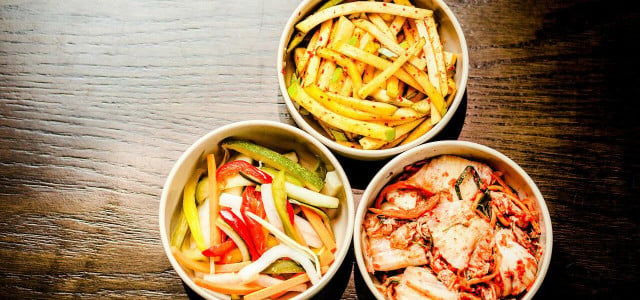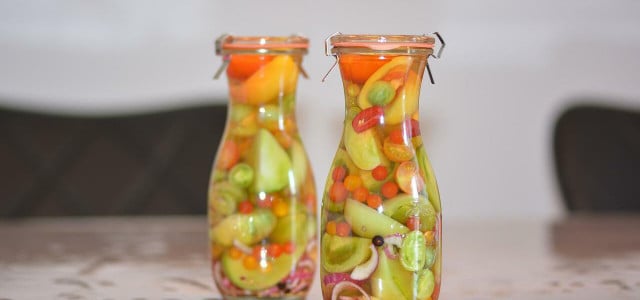Kimchi vs. Sauerkraut: though these two pungent dishes may have several similar health benefits, the two also have some key differences. Read on to learn more.
Though there are several differences that come to mind when considering kimchi vs sauerkraut (their taste, origins, and how they are eaten), these two dishes also have several similarities in their health benefits:
- both consist of fermented vegetables, meaning they are low in calories and high in fiber
- both are natural probiotics that provide numerous health benefits including digestion and immune support
- both contain lactic acid, which suppresses harmful bacteria and can preserve them for months
- both can be made easily at home, often resulting in higher quality than store-bought
Kimchi vs Sauerkraut: What is Kimchi?



(Foto: CC0 / Pixabay / nikluv)
Unlike the relatively simple sauerkraut, vegan kimchi is defined less by the specific vegetables used and more by the spices. While kimchi typically uses napa cabbages, it can also be made with radishes, scallions, cucumbers, regular cabbage, or even watermelon. The defining feature is the use of garlic, ginger, fish sauce, and Korean red pepper flakes. This gives kimchi a pungent, tangy, spicy, and savory flavor. White kimchi omits the pepper flakes and is often somewhat sweet due to the addition of pears.
Unlike sauerkraut, kimchi requires only a few days of fermentation and can be eaten fresh as a spicy salad. Because of its strong flavor, kimchi typically isn’t eaten alone, but as a condiment to provide a kick to numerous dishes, often eaten cold:
- kimchi fried rice or keto cauliflower rice
- kimchi dumplings or vegan potstickers
- kimchi veggie sushi rolls
- kimchi seasoned tofu
- kimchi chop suey
- kimchi vegan poke bowls or vegan bibimbap
Kimchi vs Sauerkraut: How is Sauerkraut Different?



(Foto: CC0 / Pixabay / RitaE)
While kimchi boasts a wide variety of vegetables, sauerkraut has a much more simple list of ingredients consisting largely of green or red cabbage, with the occasional addition of carrots, bell peppers, and beets or apples. Sauerkraut typically ferments for two weeks, resulting in a sour, salty, and tangy flavor. Sauerkraut juice is also a powerful probiotic, which can be taken as a shot. Because of its comparatively mild taste, sauerkraut lends itself well to be eaten as a side dish in larger quantities and is more often eaten hot:
- pair it as a side with savory dishes such as kielbasa or veggie sausages
- use it as a topping for vegan sandwiches, hotdogs, burgers, or potatoes
- add it to baked dishes such as vegan tater tot casserole
- use it in cold salads such as potato, pasta, or vegan chickpea salad
- make sauerkraut stuffed pierogis
- enjoy a sauerkraut salad
Read more:
- How to Make Crispy Tofu With These 6 Tricks
- Natto Recipe: How to Make the Japanese Fermented Beans
- How to Make Your Food Less Spicy
Do you like this post?








